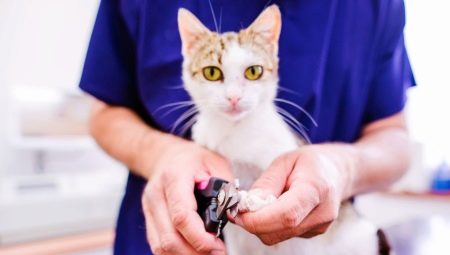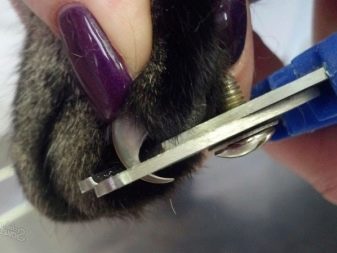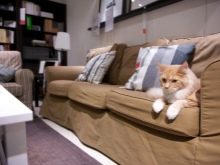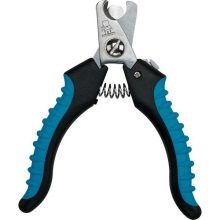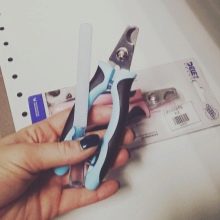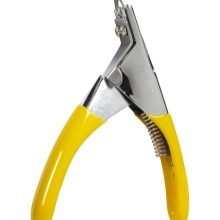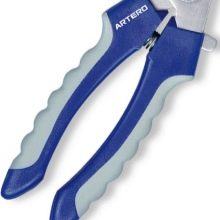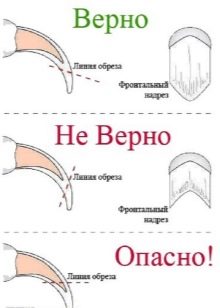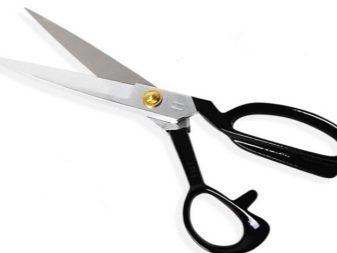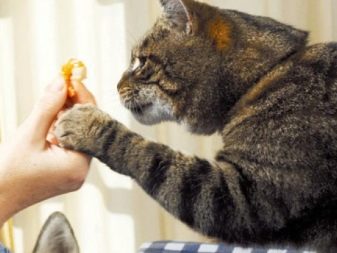Cutting the claws of a domestic cat is a mandatory procedure that allows not only to maintain the health of the pet, but also to protect the interior from the tenacious claws of the animal. You can take a cat to the veterinarian to perform the claw trimming procedure. And you can buy special scissors and independently learn to cut the claws. Especially since this is a fairly simple procedure.
Why shave claws?
The main goal of the procedure is the prevention of claw ingrowth. As soon as the claw begins to grow into soft tissues, inflammatory processes begin inside the body, an abscess, the cat begins to limp.
In addition, too long claws can cause discomfort in active animals, for example, it can cause injury when jumping from a height.
Pets with clipped claws are not so dangerous for wallpaper, upholstered furniture and other interior items. And also to cut the nails of cats is important in several cases.
- Apartment maintenance cats. If there is a pet in the house who has access to the street, then, in fact, he himself will cope with the length of his claws, because in nature cats "make a manicure" by sharpening hard surfaces or bark of a tree. A cat who always lives in the house does not have the opportunity to climb trees and grind claws, so he needs artificial pruning.
- Sedentary lifestyle. An apartment cat, especially neutered, is often lazy and greedy, it is passive and prefers to spend most of its time lying on the sofa. Such an animal should be regularly carried out the procedure for cutting claws.
- Visit the exhibition. In order for the four-legged exhibitor not to harm the visitors, he needs to cut the claws. The same applies to other activities in the life of a cat, such as bathing.
- The appearance of children. When small children appear in the house, they should also be protected from clawed cat claws, so it is important to regularly cut off the claws of your pet.
Types of claw cutters
It is possible to cut the cat's claws with four versions of the claw cutters.
- Special scissors. In appearance, these are ordinary nail scissors, but their blades have a concave, round shape, and a hole is formed in the center. The cat's claw is placed in this area, the blades are compressed and cut the desired length.
- Forceps. Remind the pliers. To cut a claw to a certain length and not to injure an animal, such a tool is equipped with a special stop. And also there is a fuse that prevents full disclosure of the blades. Due to the protective mechanism, the device is safe for children.
- Guillotine. The most popular option. This tool quickly and quickly cuts cat's claws, but before that the owner needs to adjust. The fact is that when using the guillotine, the captured length of the claw is completely invisible, so the owner must first get used to this method of work, after which he will learn how to fine-tune his pet's claws.
- Grinders This is an electrical device with removable attachments that works like a file. The device included in the network begins to rotate the head, which cuts the cat's claw. Some models are equipped with stops to remove a certain claw length. Typically, this equipment is used to work in professional grooming salons.
How to choose?
Choosing a cat's claw clippers in the store, try to take the chosen tool in your hand. Try to feel how comfortable it will be to use a particular model. If the pet is still quite small or it is a miniature breed cat, then it is recommended to give preference to scissors or forceps. Be sure to choose a tool made of quality steel, but such that the handles have rubber lining - it is more convenient to work with such scissors.
If the choice fell on the guillotine, then take a model equipped with a limiter.
How to cut?
To properly carry out the procedure for trimming cat's claws, you should study the structure of this part of the body. Looking at the claw in the light, you can see that its color is different. Pay attention to the pink part of the claw. These are blood vessels, so pruning in this area is prohibited.
In the process of growth of the claws, the capillaries penetrate into it, if the capillary is touched during trimming, this can cause bleeding.
Naturally, the pet will experience pain and the next time it will be quite difficult to make him sit quietly during the manipulation.
To avoid such a problem, it is recommended to shave only the curved part of the nail, to the area where the vessel is adjacent. It is better to start the procedure from a youthful age so that the kitten is used to circumcision. In spite of the fact that correctly executed trimming for an animal is painless, the cat still feels some discomfort. After all, it is usually necessary to firmly hold it in a blanket, and this frightens the animal. If pruning is done from childhood, then the pet will have time to get used to it, so it will not panic at the sight of scissors. The procedure consists of several stages.
- Prepare the tool. Disinfect it, wash your hands.
- It is better to perform a "manicure" cat with an assistant. One person should keep an animal, the second - to carry out cutting. If there is no partner, the cat is recommended to be tightly wrapped in a blanket, leaving only the head and the desired paw.
- Having fixed the pet well, you need to take the foot and press your finger on the pad, then the animal will show claws.
- If the claw is light, then it is clipped at a distance of 1-2 mm to the pink zone. Pigmented claw is cut 1–2 mm from tip.
- If the owner still touches a blood vessel, it is recommended to wet the cotton pad with hydrogen peroxide and treat the damage.
The following additional guidelines for adhering to the procedure should be followed:
- it is believed that cats can not cut their nails with ordinary scissors, but this is not quite true - simple scissors are really quite inconvenient to use, but if the owner of the animal has a lot of experience in carrying out the procedure, then he will cope with this tool;
- Before starting the operation, give the cat a sniff of an unfamiliar instrument so that he understands that this object is not dangerous;
- in order to reassure the pet after such uncomfortable manipulation, it is recommended to reward him with a “snack”, stroke, praise for patience with a gentle voice;
- The frequency of the procedure at home depends on the lifestyle of the pet, the growth rate of the claws of a particular individual, and other factors, but the generally accepted interval is once every two weeks.
See below for an overview of cat clippers and their application features.
